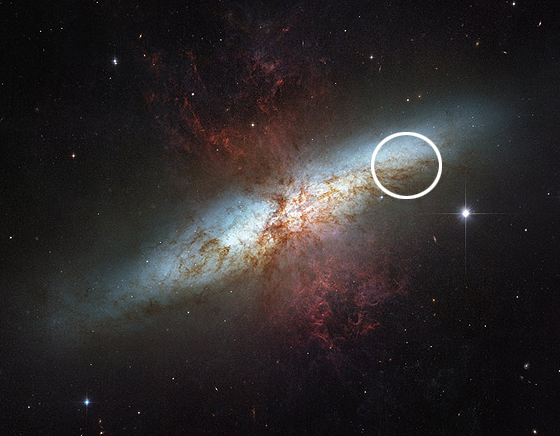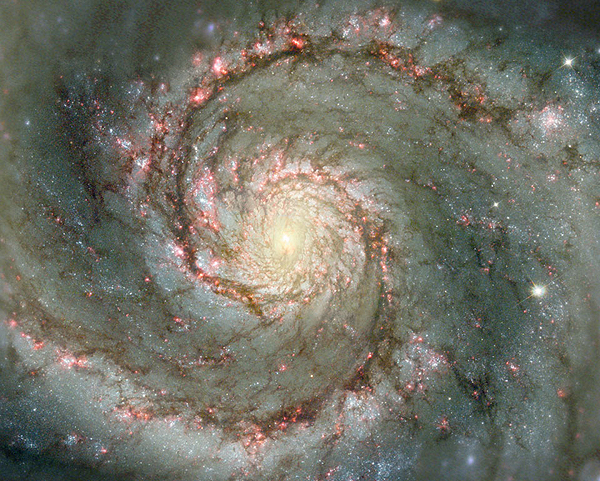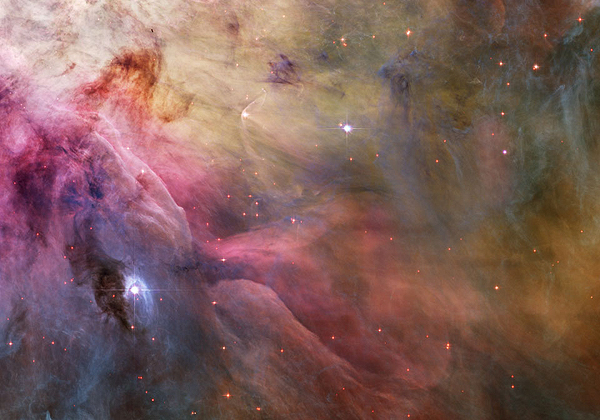Here are some beautiful space photos and videos that have been posted on the Internet recently. Enjoy!

Here are some beautiful space photos and videos that have been posted on the Internet recently. Enjoy!

Here are some beautiful space photos and videos that have been posted on the Internet recently. Enjoy!

This spectacular spiral galaxy is about 30 million light-years from Earth and is about 60,000 light-years across. You can see this galaxy with a good pair of binoculars.

This esthetic close-up of cosmic clouds and stellar winds features the star LL Orionis, interacting with the flow of the Orion Nebula, in the Name A Star Live constellation Orion. Adrift in Orion’s stellar nursery and still in its formative years, variable star LL Orionis produces a wind more energetic than the wind from our own middle-aged Sun. As the fast stellar wind runs into slow moving gas a shock front is formed, analogous to the bow wave of a boat moving through water or a plane traveling at supersonic speed. The small, arcing, graceful structure just above and left of center is LL Ori’s cosmic bow shock, measuring about half a light-year across. The slower gas is flowing away from the Orion Nebula‘s hot central star cluster, the Trapezium, located off the upper left corner of the picture. In three dimensions, LL Ori’s wrap-around shock front is shaped like a bowl that appears brightest when viewed along the “bottom” edge. The beautiful picture is part of a large mosaic view of the complex stellar nursery in Orion, filled with a myriad of fluid shapes associated with star formation.
This is a NASA video explaining that meteor that exploded over Russia last month.
This is a 4-minute, NASA video about Comet PanSTARRS that may be visible this month. For more information, see our blog article about this comet.
Here are some beautiful space photos that have been posted on the Internet in recent weeks. Enjoy!

Big, beautiful, barred spiral galaxy NGC 1300 lies some 70 million light-years away on the banks of the constellation Eridanus. This Hubble Space Telescope composite view of the gorgeous island universe is one of the largest Hubble images ever made of a complete galaxy. NGC 1300 spans over 100,000 light-years and the Hubble image reveals striking details of the galaxy’s dominant central bar and majestic spiral arms. In fact, on close inspection the nucleus of this classic barred spiral itself shows a remarkable region of spiral structure about 3,000 light-years across. Unlike other spiral galaxies, including our own Milky Way, NGC 1300 is not presently known to have a massive central black hole.

On April 12th, 1961, Soviet cosmonaut Yuri Alexseyevich Gagarin became the first human to see planet Earth from space. Commenting on his view from orbit he reported, “The sky is very dark; the Earth is bluish. Everything is seen very clearly.” To celebrate, consider this recent image from the orbiting International Space Station. A stunning view of the planet at night from an altitude of 240 miles (386 kilometers), it was recorded on March 28. The lights of Moscow, Russia are near the center of the picture and one of the station’s solar panel arrays is on the left. Aurora and the glare of sunlight lie along the planet’s gently curving horizon. Stars above the horizon include the compact Pleiades star cluster, immersed in the auroral glow.

How did spiral galaxy ESO 510-13 get bent out of shape? The disks of many spirals are thin and flat, but not solid. Spiral disks are loose conglomerations of billions of stars and diffuse gas all gravitationally orbiting a galaxy center. A flat disk is thought to be created by sticky collisions of large gas clouds early in the galaxy’s formation. Warped disks are not uncommon, though, and even our own Milky Way Galaxy is thought to have a small warp. The causes of spiral warps are still being investigated, but some warps are thought to result from interactions or even collisions between galaxies. ESO 510-13, pictured above digitally sharpened, is about 150 million light years away and about 100,000 light years across.